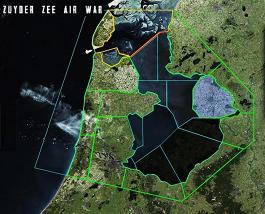
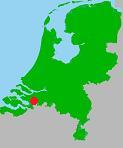
Relation with Lake (class): Lake Casualty Cemetery (LCC)
Total nr. of casualties buried here (TC): 900 end 1944, today 1115.
Lake casualties, initially, end WW2 (LC-I): 0
Unknown today: 31, most washed ashore airmen and Dunkirk soldiers.
of which unknown from Lake (LC-U): possible 1.
of which unknown from North Sea (NS-U): 26.
Initial burial site in WW2 for Canadian Army casualties.
Post war war graves concentration site: yes
Cemetery with Lake casualties today: yes (LCW).
BERGEN-OP-ZOOM CANADIAN WAR CEMETERY
This area became a battlefield in October 1944: the battle for Scheldt river estuary. Goal was to open the harbour entrance to Antwerp. Thousands of Allied soldiers lost their lives. Outside Bergen-op-Zoom a cemetery was created. Because half of the casualties were Canadian, the cemetery was split into a Canadian and a Commonwealth section. The Canadian side is named '1939-1945 Bergen-op-Zoom Canadian War Cemetery' and the other section is named '1939-1945 Bergen-op-Zoom War Cemetery'. The lay-out of the plots on each field is completely different.
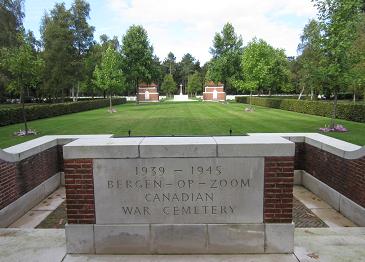
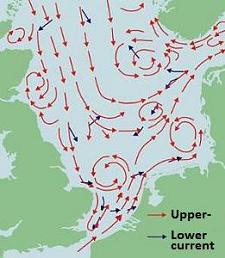
Dutch name cemetery: Bergen-op-Zoom Canadese oorlogsbegraafplaats.
Full name: 1939-1945 Bergen-op-Zoom Canadian War Cemetery.
Address (usable for car navigation):
Ruytershoveweg 30, (via motorway A58, exit 26 'Heerle') or BOZ centre.
For reaction or comments; send us an email,
see address and info at CONTACT.
Please use as subject title: 'BOZ Canada'.
After the battle and post war, both fields became war graves concentration cemeteries. The Canadian cemetery originally contained about 900 Canadian army soldiers killed in the fighting here. Later were brought over to this location about 200 remains of airmen, soldiers (1940 Dunkirk victims) and sailors. They came from the nearby German Bergen-op-Zoom Wouwseweg military cemetery and from Dutch (coastal) cemeteries that were cleared. Also from wreck site locations in the Netherlands. They were laid to final rest in the outer plots of the field. Not all of them were Canadian.
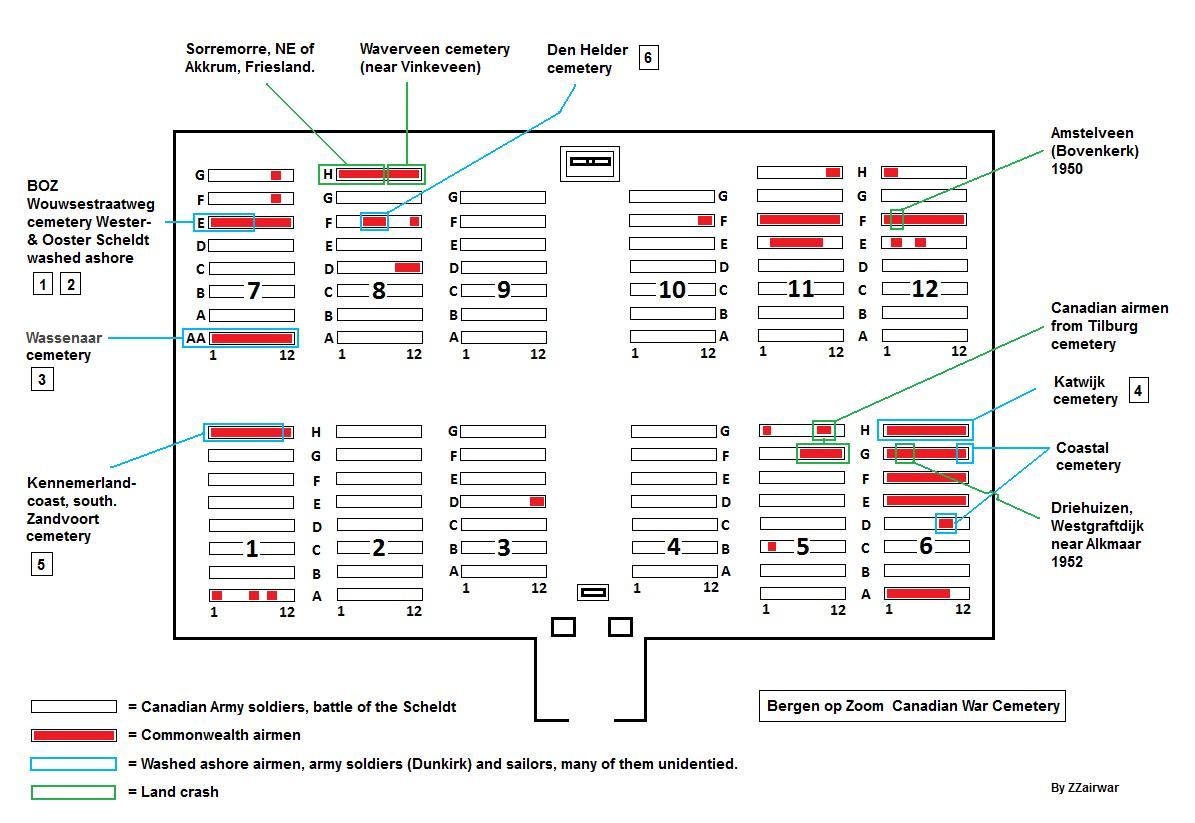
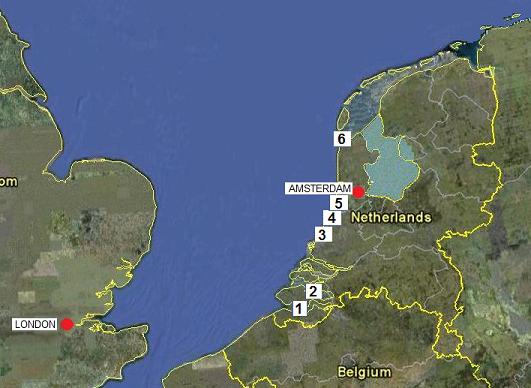
Map right:
Dutch coast. Cemeteries were cleared and war graves went to BOZ from following locations:
6. Den Helder
5. Zandvoort
4. Katwijk
3. Wassenaar
2. Eastern-Scheldt estuary
1. Western-Scheldt estuary
The Eastern and the Western Scheldt are sea arms with an open connection to the North Sea. Towards land they both lead to Bergen op Zoom.
Not only Canadians
Today there are also 135 dead from the UK, about 12 men from New Zealand and Australia, 1 American: Flying Officer Spencer W. Cook from Santa Fe, Tennessee, USA. He was flying for the RCAF, killed 22 June 1944. One Dutchman 1Lt. Johan G.C. Koes, flying for the RAF, killed 3rd of February 1945. There are no Polish casualties. Total number of airmen is about 150, many of them crashed in the North Sea and washed ashore on the Dutch coast, 13 are not identified. One could be from Lake IJsselmeer (Old Zuyder Sea), came to here in 1947 via Den Helder. The information on the non-identified and their grave position can be found in our data base (search menu).
Of the 31 non-identified casualties on BOZ-Canada, 26 washed ashore on the Dutch coast. These 'known unto God' are: 13 airmen, 12 soldiers (of which 9 must be Dunkirk victims) and 1 sailor (a naval officer).
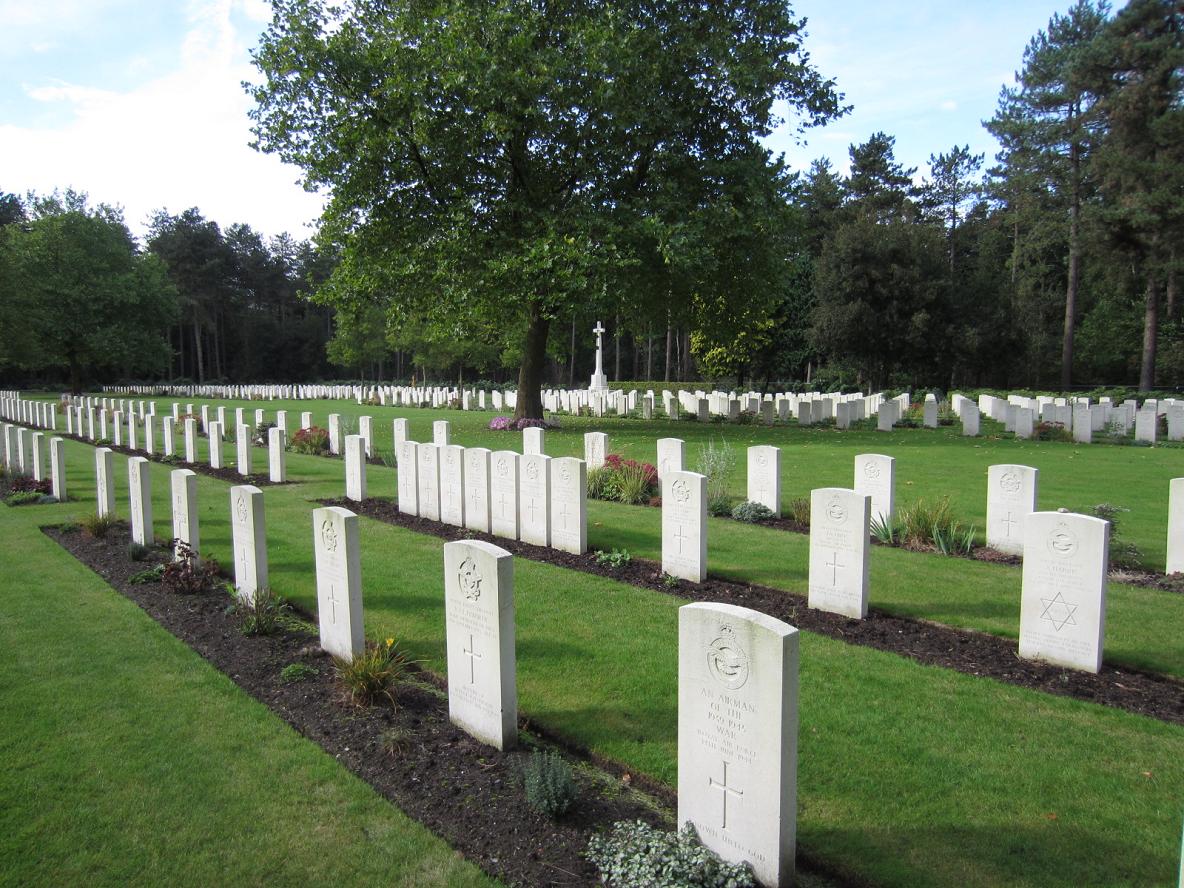
Photo above: view from plot 6, row F, grave 7, towards plot 10 and the Cross of Sacrifice.
Photo below: view from the same position towards plot 4 and the entrance.
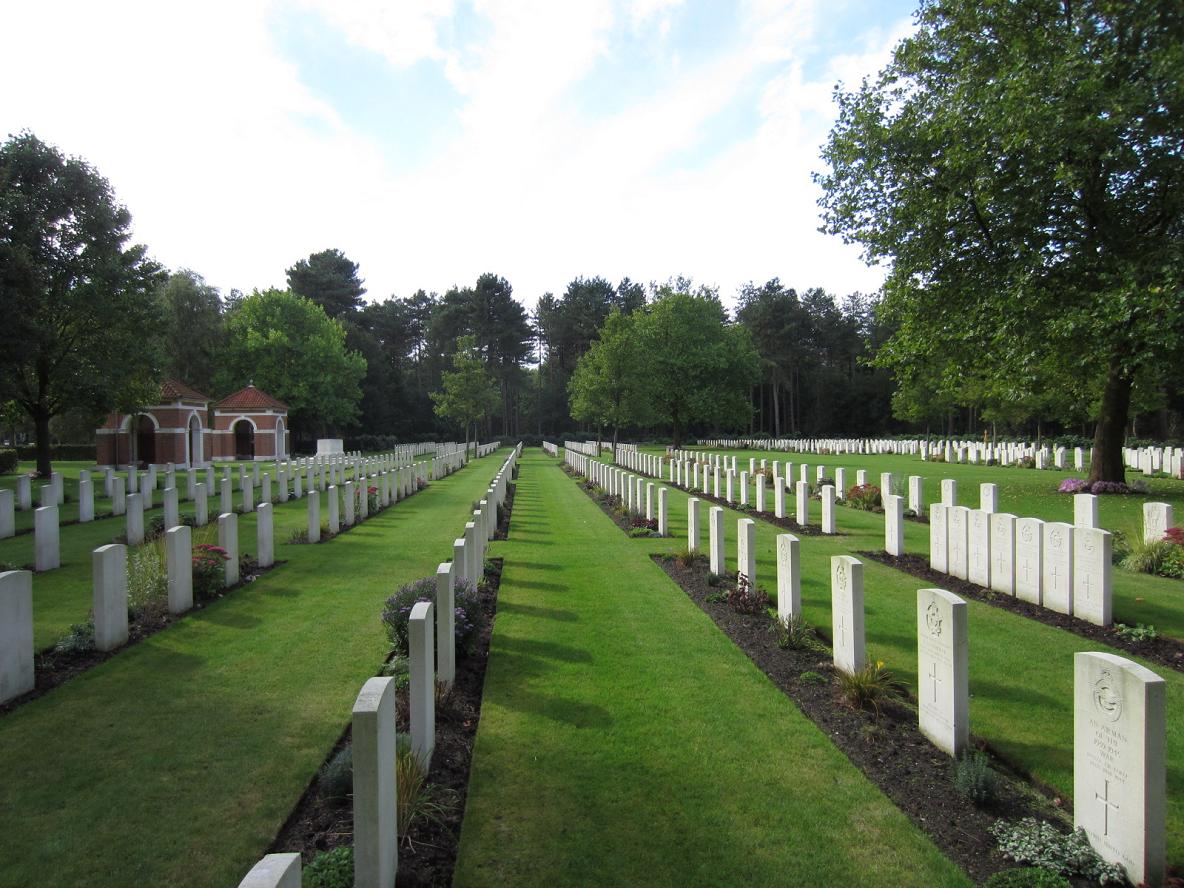
Photo below: Plot 8, back rows with a wooden memorial 'to the fallen'. As the graves here, it can originate from a cleared Dutch cemetery.
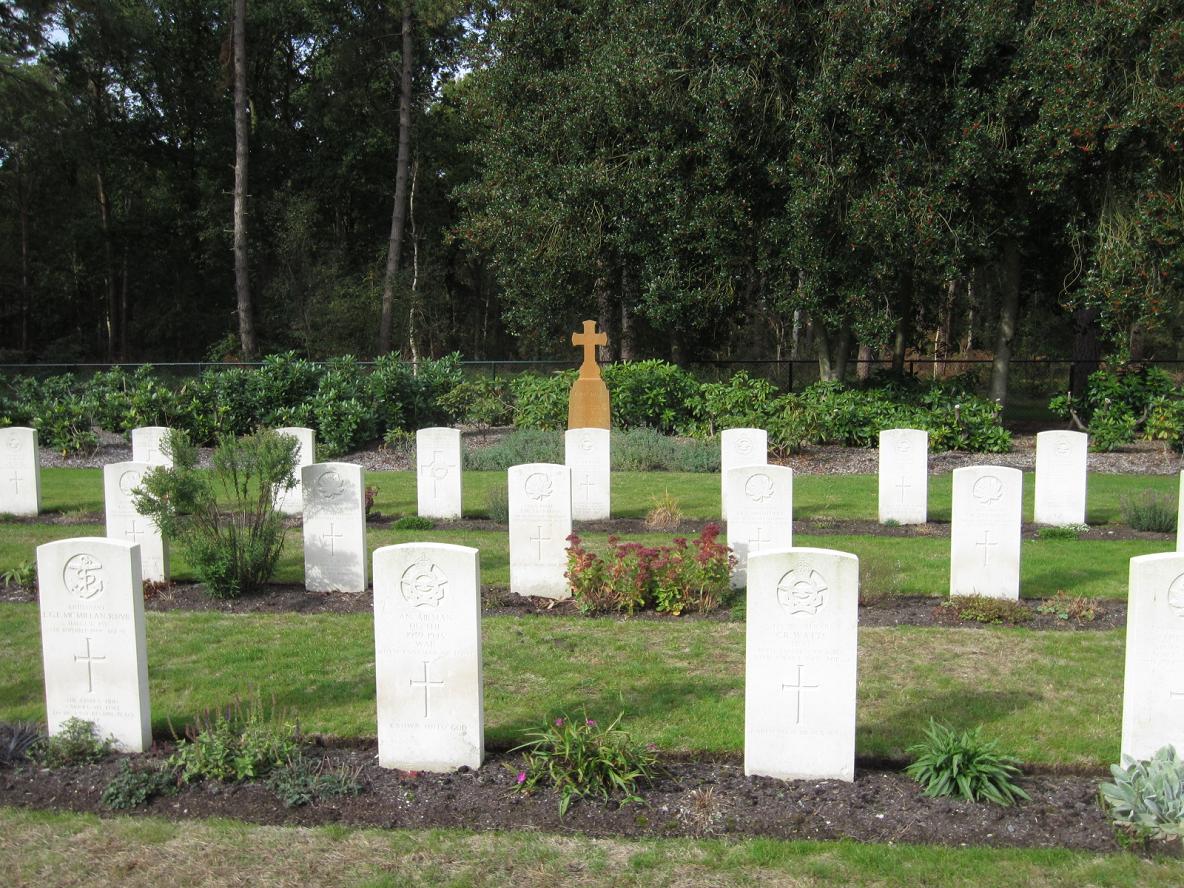
© ZZairwar (Zuyder Zee Air War).